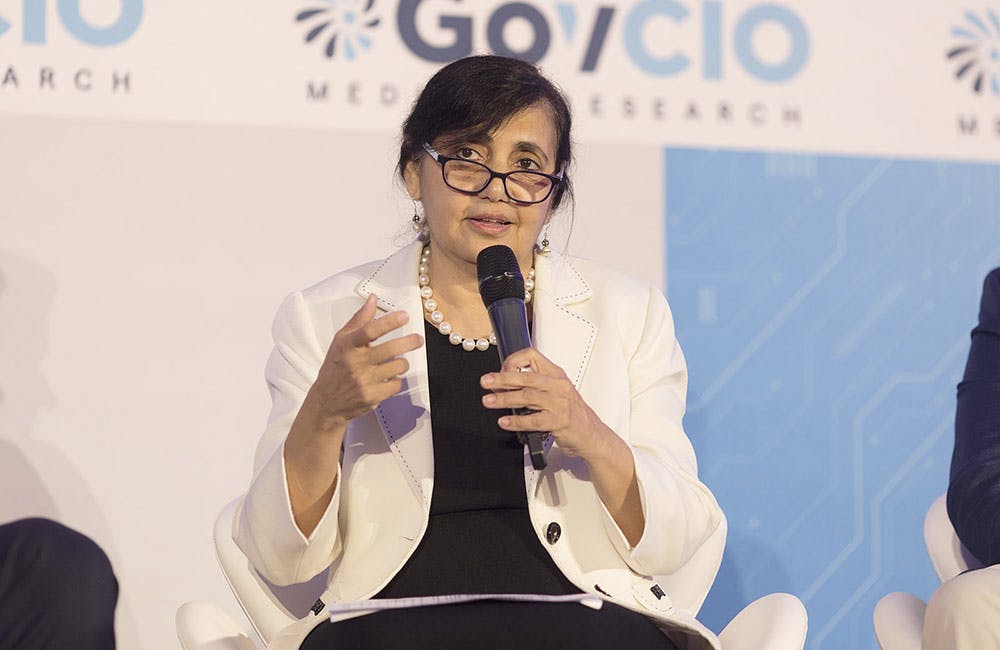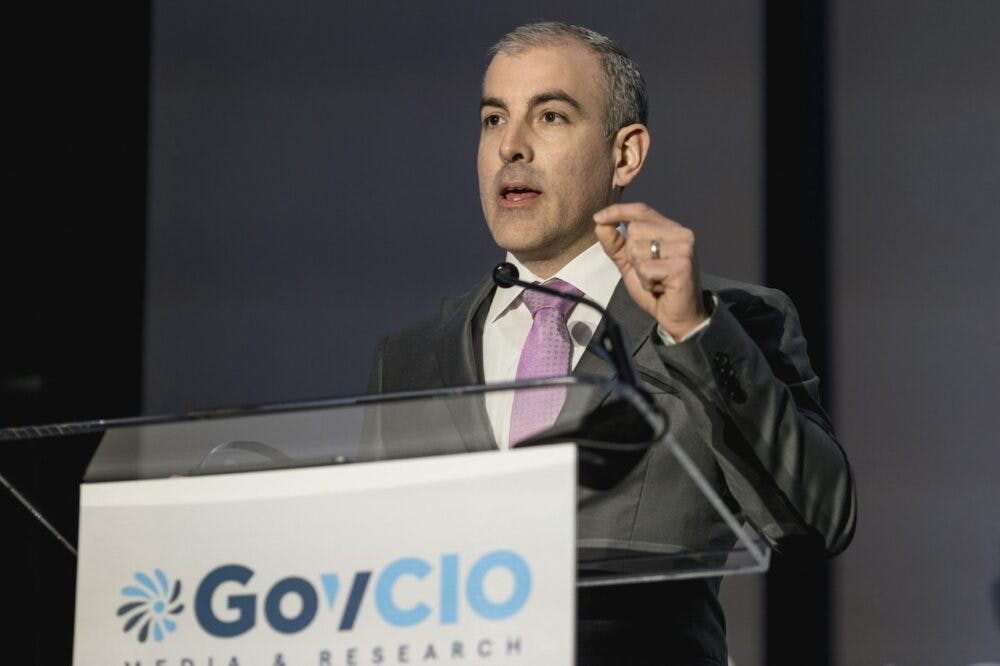How RPA Improves Employee Morale, Efficiency
The federal community has gleaned similar benefits from automated functions.

For most federal agencies, robotic process automation (RPA) is an employee morale booster and a force multiplier. In the face of concerns about RPA taking jobs away from human employees, IT leaders at the departments of Homeland Security, Defense and Energy said RPA in practice flipped the notion on its head.
“RPA is really a force multiplier,” said Erica Thomas, RPA program manager at DOD, during an ATARC Digital Transformation Summit panel. “What we’ve experienced in terms of overall benefits is, it’s really an employee morale booster. The things we’re automating are either the things we can’t get done because of the bandwidth we have or mundane tasks that are really eating up people’s time. In addition, you see other benefits like improving accuracy, [making things] more auditable.”
Energy CIO Ann Dunkin said her office had a similar experience with RPA.
“The fact of the matter is RPA, AI, machine learning — they’re all tools that help us automate mundane tasks, sometimes complex tasks, sometimes easy tasks,” she said at the event. “That are repetitive, take up a lot of our employees’ time and are usually, frankly, pretty boring. Two benefits: the ability to reduce errors and to repurpose those folks to higher-level work.”
Dunkin believes fears of RPA taking away human jobs are unfounded.
“No one was ever laid off from a government job for lack of work,” she said. “If we take that work away, we will give you something more interesting that will improve your skillset and give you more opportunities in the future. It’s an opportunity for employees to stretch and grow.”
Anil John, technical director at the DHS Silicon Valley Innovation Program (SVIP), said RPA is helping the Transportation Security Administration improve security checkpoint efficiency at airports.
“There is a bag-checking process and that is something the TSA officer plays close attention to,” John said at the event. “One thing we’re focused on is not threat detection, but can we use RPA to determine what is a normal stream of commerce and eliminate that from their consideration, so we can help them pay attention to what is the exception to the rule? Because the human can add value to that.”
For John, RPA is about allowing humans to do more meaningful work. If RPA can create a baseline for normal activity in a surveillance job, like TSA officers at airports, then the TSA officers can focus on identifying abnormalities.
“With [Customs and Border Protection], they’re responsible for making sure every single thing imported to the U.S. goes through them, so there’s a lot of information that’s coming in,” John said. “What we’re focused on there is digitizing the import documentation, particularly as it relates to the import of steel, agricultural products, oil and natural gas, and e-commerce goods. The bottom line of it is a risk-based assessment that allows us to use a set of automation technologies to make sure if all the things check out from a machine analysis perspective, we can apply human intelligence (to find) the exception to the rule.”
Meikle Paschal, an RPA program manager at Customs and Immigration Services, described USCIS as an “IT-intensive agency” focused on using IT to make work as efficient as possible, like John’s goals for TSA and CBP.
“I think everything is in the sauce, it’s about implementation,” he said during the event. “We’ve implemented in a way that everyone is welcome to the party. We also have robotics-as-a-service, which is an internal team that does development for people. I think we’ve done a decent job of alleviating the fear of job replacement. We really emphasize that RPA is about connecting systems and their data. We have very intensive systems transmitting data, especially immigration data, that needs to be done consistently.”
This is a carousel with manually rotating slides. Use Next and Previous buttons to navigate or jump to a slide with the slide dots
-

AI Foundations Driving Government Efficiency
Federal agencies are modernizing systems, managing risk and building trust to scale responsible AI and drive government efficiency.
43m watch -

Agencies Tackle Infrastructure Challenges to Drive AI Adoption
Federal agencies are rethinking data strategies and IT modernization to drive mission impact and operational efficiency as new presidential directives guide next steps.
5m read Partner Content -

Generative AI Demands Federal Workforce Readiness, Officials Say
NASA and DOI outline new generative AI use cases and stress that successful AI adoption depends on strong change management.
6m read -

The Next AI Wave Requires Stronger Cyber Defenses, Data Management
IT officials warn of new vulnerabilities posed by AI as agencies continue to leverage the tech to boost operational efficiency.
5m read -

Federal CIOs Push for ROI-Focused Modernization to Advance Mission Goals
CIOs focus on return on investment, data governance and application modernization to drive mission outcomes as agencies adopt new tech tools.
4m read -

Fed Efficiency Drive Includes Code-Sharing Law, Metahumans
By reusing existing code instead of rewriting it, agencies could dramatically cut costs under the soon-to-be-enacted SHARE IT Act.
5m read -

Navy Memo Maps Tech Priorities for the Future Fight
Acting CTO’s memo outlines critical investment areas, from AI and quantum to cyber and space, as part of an accelerated modernization push.
5m read -

DOD Can No Longer Assume Superiority in Digital Warfare, Officials Warn
The DOD must make concerted efforts to address cyber vulnerabilities to maintain the tactical edge, military leaders said at HammerCon 2025.
4m read -

New NSF Program Cultivates the Future of NextG Networks
The agency’s new VINES program looks to tackle key challenges like energy efficiency and future-proofing wireless tech.
21m watch -

DHA CDAO Spearheads Master Data Catalog to Boost Transparency
Jesus Caban plans to boost DHA's data maturity through a new master data catalog, governance frameworks and inventory of tech tools.
5m read -

Trump Orders Spark Government-Wide Acquisition Overhaul
As Trump pushes for a faster, simpler procurement system, agencies are leveraging AI and adapting strategies to meet new requirements.
5m read -

Inside Oak Ridge National Lab’s Pioneer Approach to AI
Energy Department’s Oak Ridge National Lab transforms AI vulnerabilities into strategic opportunities for national defense.
22m listen
















